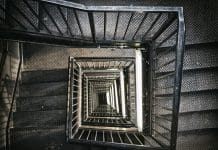Koen ter Linde, vice president of Enterprise in Europe, CommScope, addresses safety with new EU building legislation looming and the need for compliance
When building or decorating our homes, we want to make sure materials such as curtains, carpet or furniture fabrics are safe. Checking the flammability of those items is critical, given that our loved ones’ safety is at stake. However, it’s not just our homes that need to be safe from these risks.
We spend significant amounts of time in places such as our work, public buildings, schools and hospitals – even concert venues. But how do we know all construction materials have been properly selected, and their equipment remains safe from fire hazards and other risks?
This is where legislation comes in. Addressing this question directly, European regulators introduced the Construction Product Directive (CPD) in 1989, which classifies fire safety and applies to all construction products. This later became the Construction Product Regulation (CPR) in 2011.
A new testing and classification scheme was agreed for the implementation of the CPD, in particular, relating to the harmonisation of reaction to fire testing of construction products. In 2006, power and communications cables permanently installed in buildings and civil works were accepted as construction products, and the CPD Euroclassification for cables (2006/751/EC) was published in the Official Journal of the European Union and later in EN 13501-6.
Further classification of how products, such as communications cables, react to fire was published in 2016 and the final mandatory date to establish CE marking of cables is 1 July 2017. All cables manufactured to this date and beyond must have a CE marking on the packaging label, meaning the products meet health and safety standards required for commercial use.
Mandatory cable fire performance marking will be required and, for the first time in Europe, a ‘hierarchy’ of cable fire requirements will exist.
Digging into the detail, this hierarchy will entail seven specific Euroclasses: Aca, B1ca, B2ca, Cca, Dca, Eca and Fca, with Aca having the highest performance and Fca having the lowest, though Aca and B1ca are not applicable to communication cables. Euroclass Eca cables meet the minimum requirement of EN 60332-1-2.
Country-by-country adoption
Due to its size and diversity, the EU could not be expected to develop exact requirements consistent across the entire continent. In turn, each member country is free to adopt whichever Euroclass deems suitable. However, the following advice currently applies:
1. If national regulations exist, they must be adjusted to match the CPR;
2. If national regulations do not exist, there is no requirement to institute them;
3. The CPR may be directly applicable to certain applications such as public transport tunnels and public institutions, irrelevant of the above condition (2).
Simply put, different EU countries may require cables with different Euroclassification for use in the same installation environment. For example, some countries may require Euroclass B2ca cables to be installed in hospitals whereas other countries may accept Euroclass Cca cables.
It’s important to highlight that the CPR only applies to power and communications cables permanently installed in buildings, so patch cords and work area cords are excluded from the regulation.
Investment in safety
To allow easy identification, every product brought to the EU market has to carry the adequate CE label concerning the applicable Euroclass. This, of course, may require some investment from building owners and compliance teams, as the CPR will likely result in increased costs of testing and the overall manufacturing cost of communication cables, especially for the higher Euroclasses.
However, with abiding by legislation – and of course safety as the utmost importance – it is critical that all manufacturing facilities serving the European market have been audited and approved by Notified Bodies. The building industry must also ensure it only works with vendors that have carried out extensive testing with Notified Bodies over an extensive period of time, and who are ready to provide the proper Declarations of Performance for cabling products.
This directive has been put in place to safeguard school and university students, hospital patients and even those in everyday office-spaces. While changing legislation can typically lead to yawns of frustration from safety and compliance officers, I think it’s fair to say as an industry, that health and safety must always remain at the very top of our agendas, protecting each one of us from the dangers of fires and other emergencies.
. . . . . . . . . . . . . . . . . . . . . . . . . . . . . . . . . . . . . . . . . . . . . . .
Koen ter Linde
Vice President of Enterprise in Europe
CommScope
Twitter: @CommScope

















